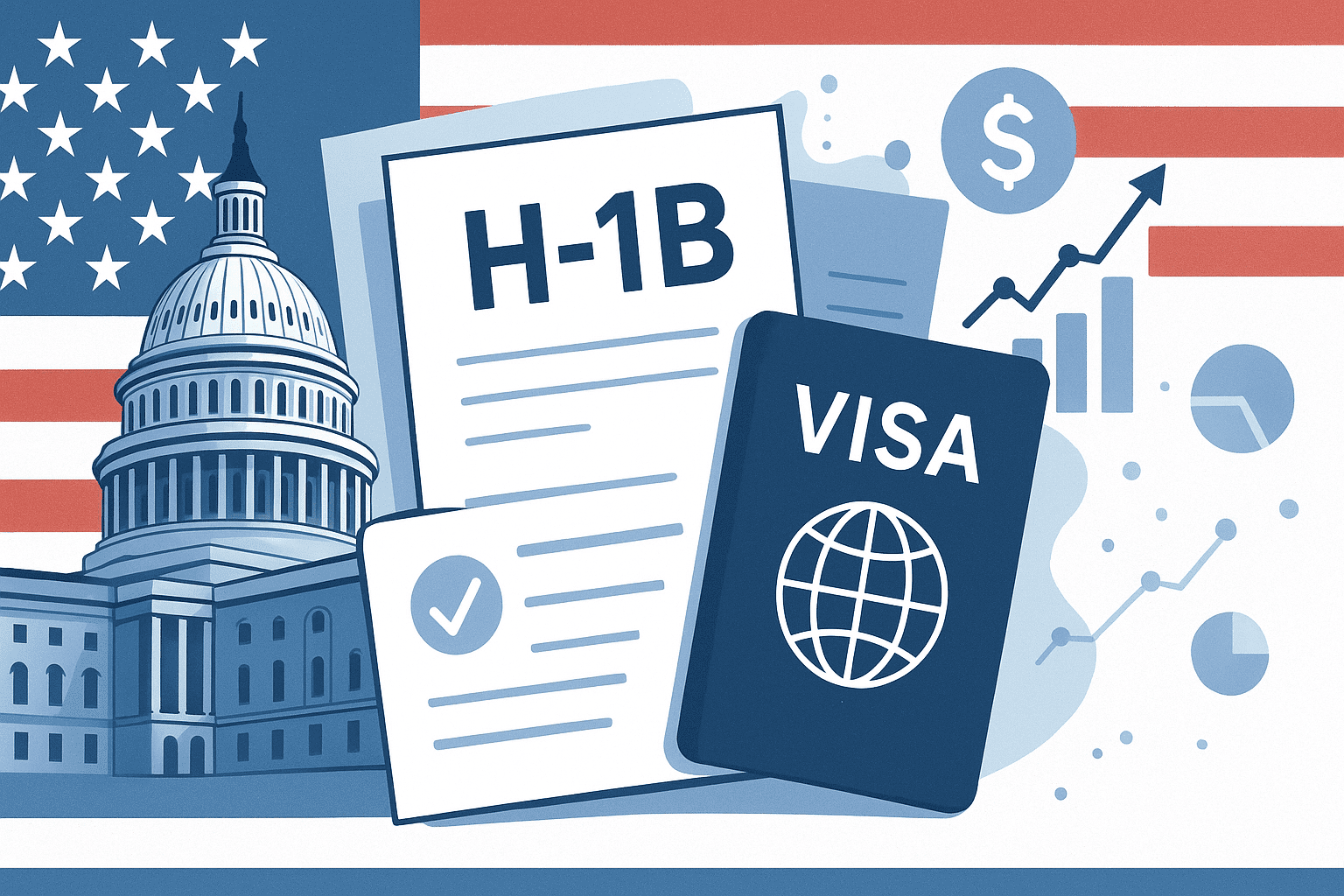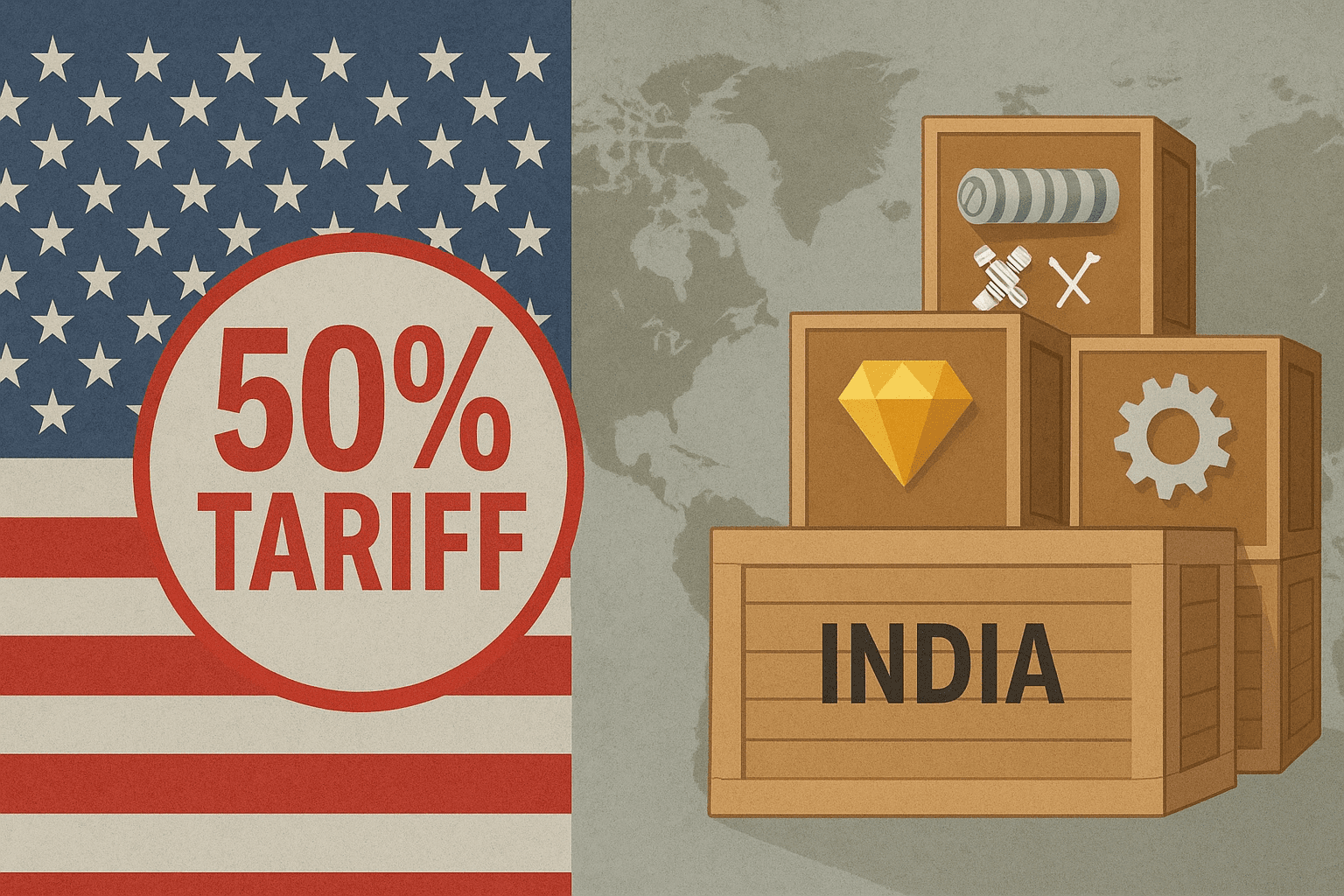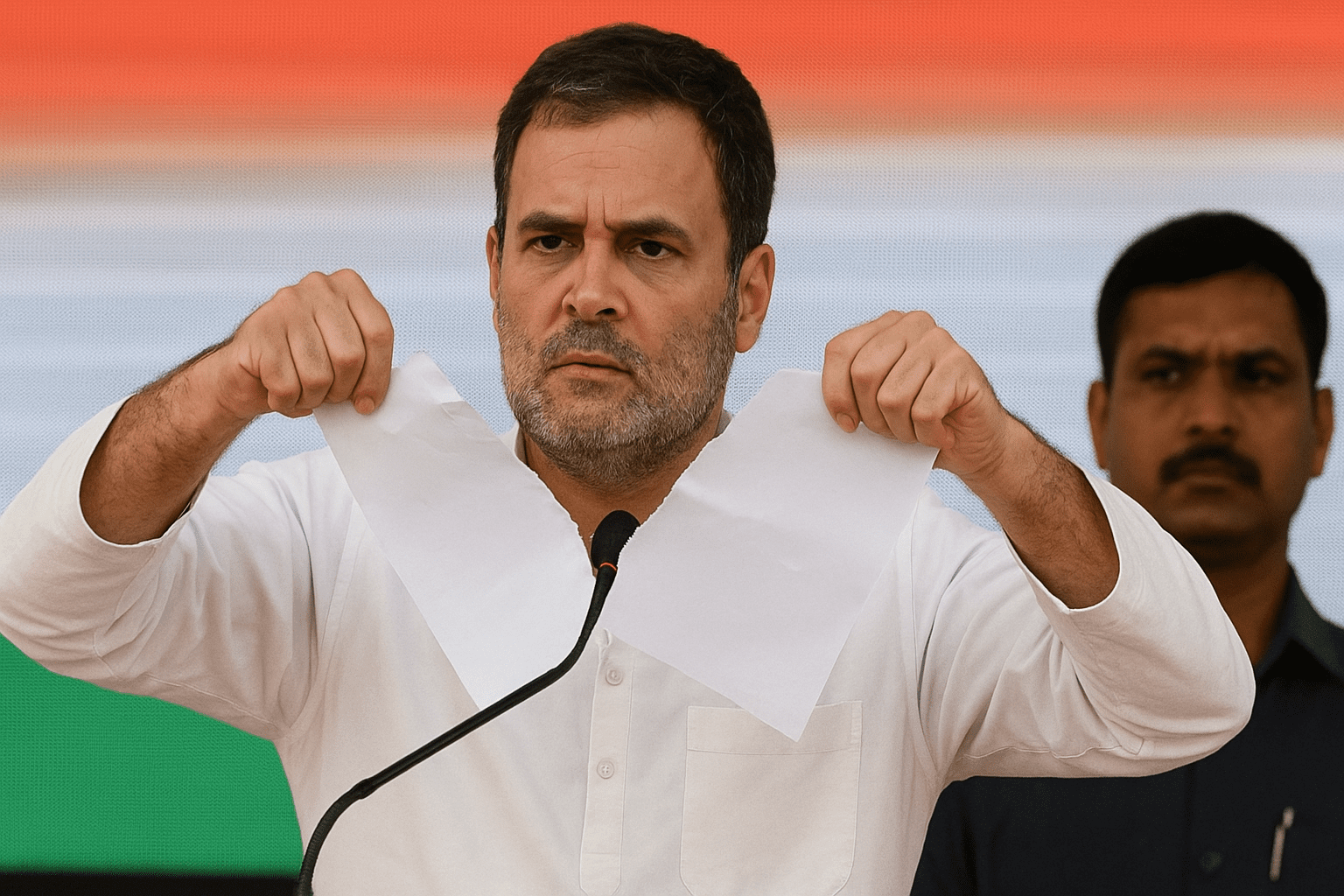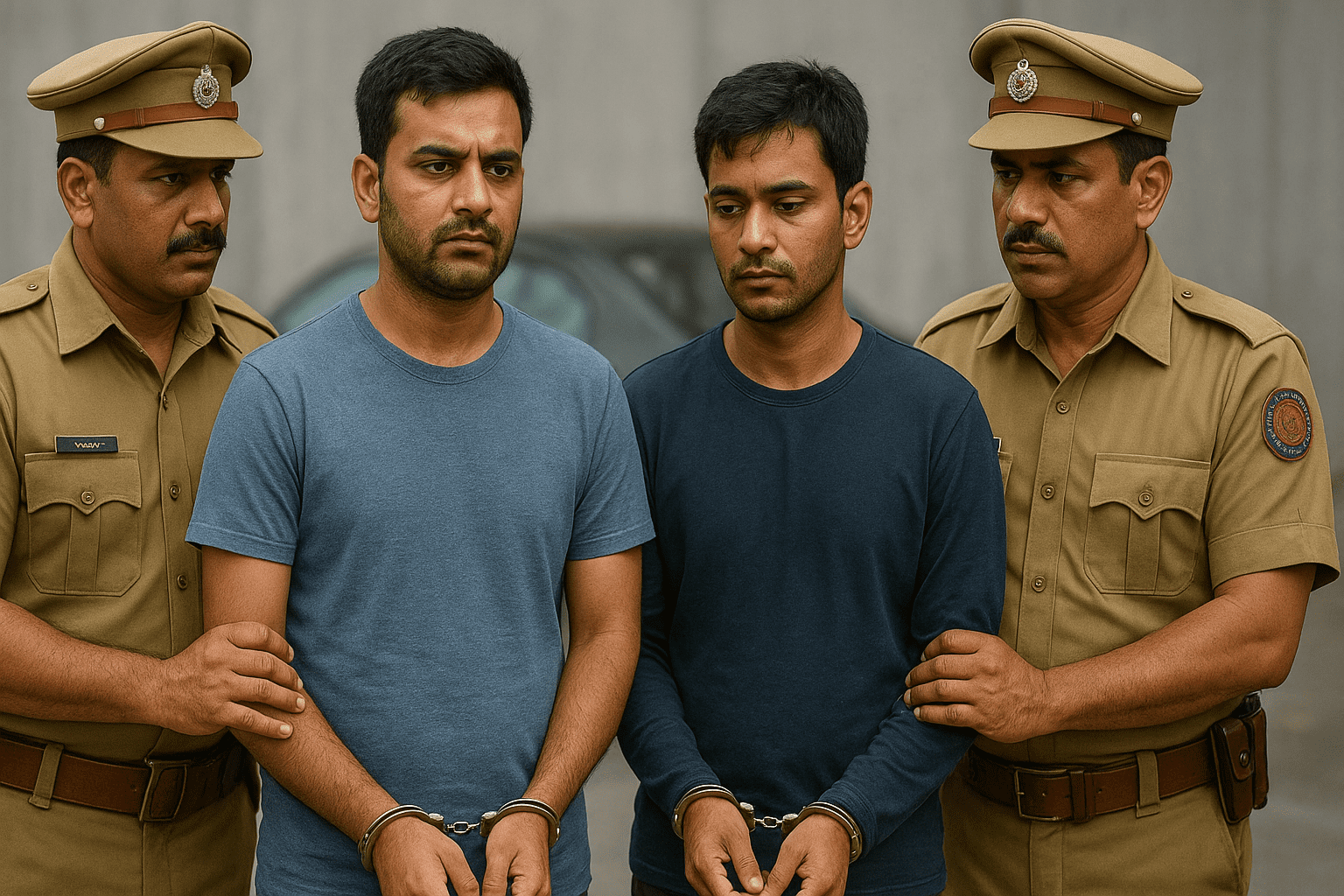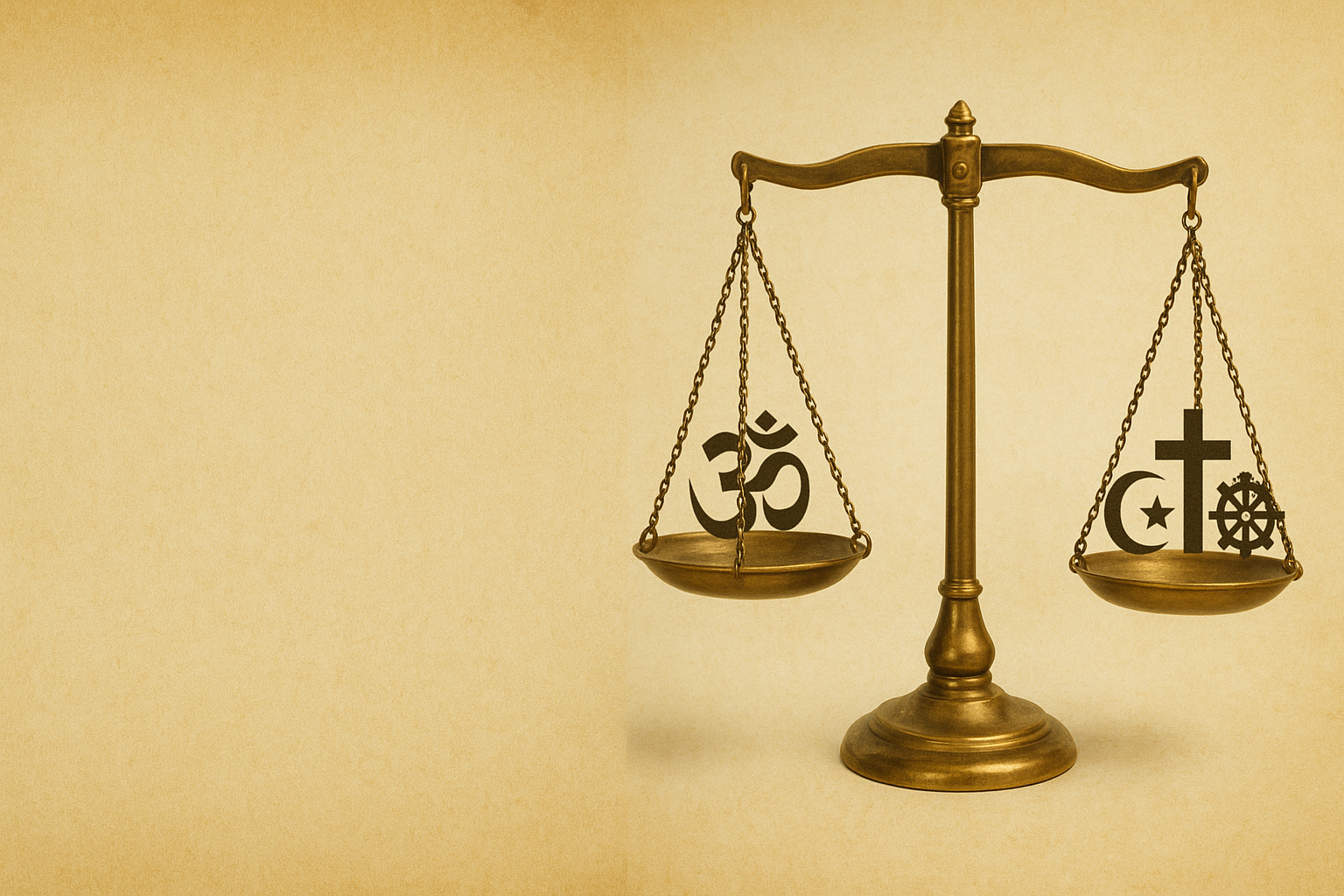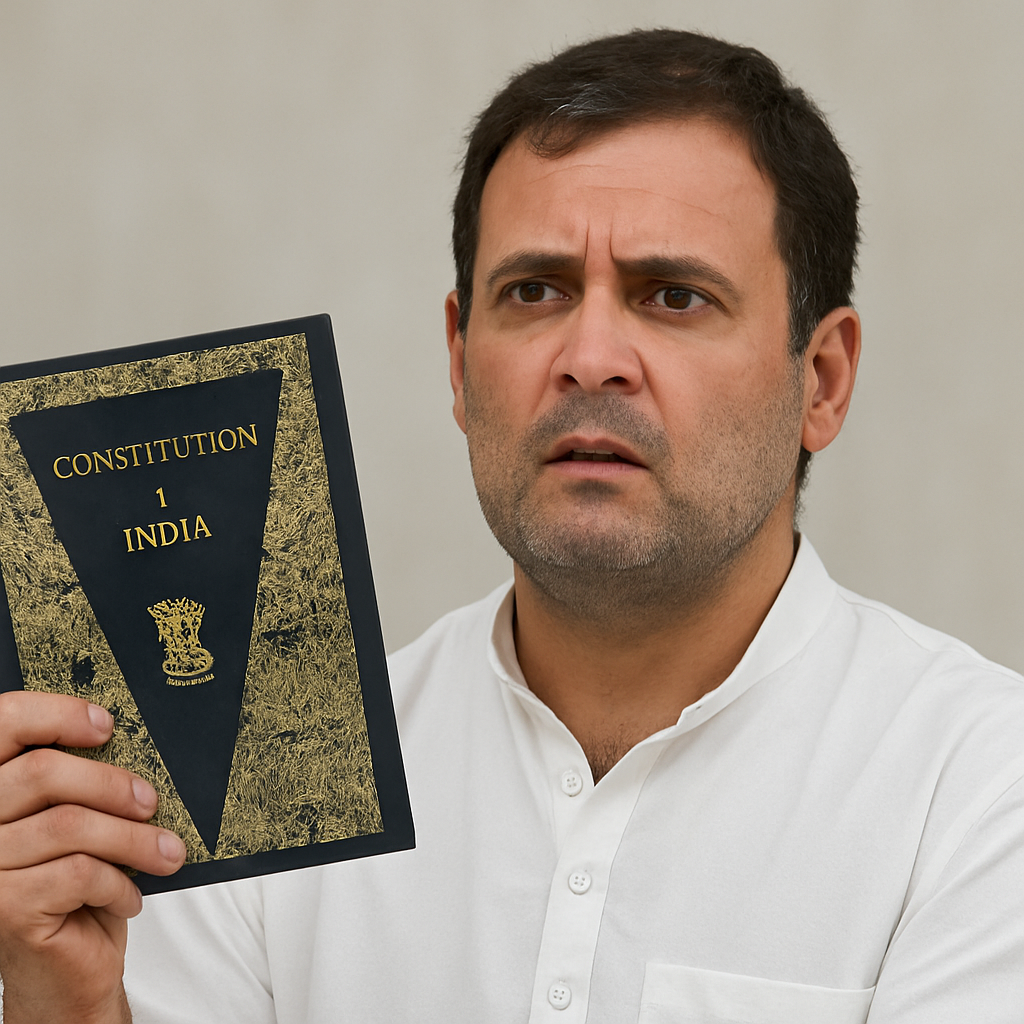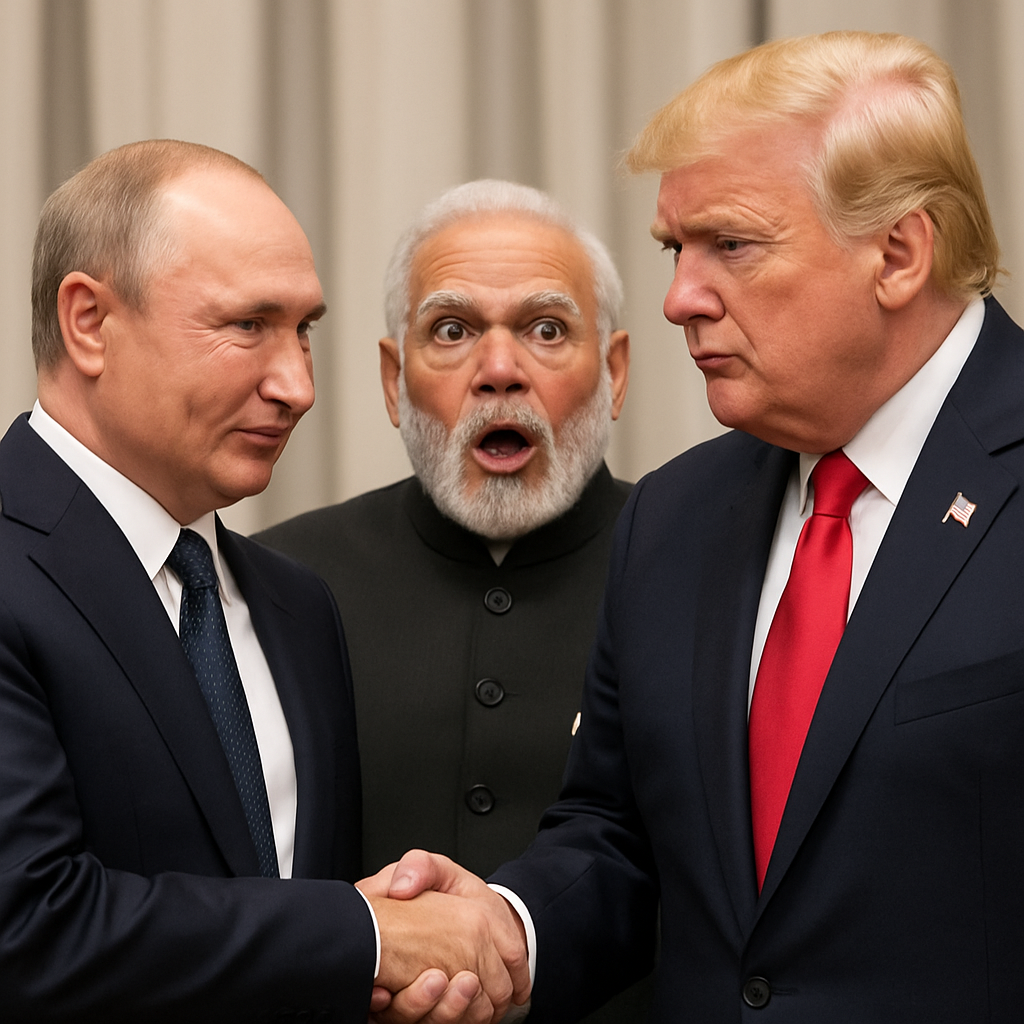The H-1B visa has long been the most popular pathway for Indian students in the United States to transition from higher education into the workforce. However, the Trump administration has introduced sweeping changes in 2025, significantly altering the landscape for students pursuing or completing their MS degrees. These changes are poised to affect not just employers, but also tens of thousands of Indian students who view the U.S. as a launchpad for global careers. This article unpacks the New changes in H-1b visa policy – 2025 Key Changes in the H-1B Visa Policy $100,000 Annual Fee The most headline-grabbing change is the imposition of a US$100,000 annual fee per H-1B worker. This is designed to discourage mass hiring through the program, making it viable mainly for companies offering high-end roles. Wage-Based Selection Over Lottery The traditional lottery system may be replaced or heavily restructured to prioritize higher salaries. This means students graduating into entry-level jobs could be at a disadvantage compared to seasoned professionals. Stricter Eligibility & Higher Wages There is greater scrutiny on whether a role qualifies as a “specialty occupation.” In addition, prevailing wage requirements are expected to rise, pushing employers to pay higher salaries if they want to retain H-1B workers. Mandatory Face-to-Face Interviews Starting late 2025, in-person interviews will be required for most H-1B applicants. This adds another layer of logistical and financial challenge for recent graduates already managing student debt. Competing Immigration Pathways The introduction of “Gold Card” and “Platinum Card” residency visas—targeting the ultra-wealthy—signals a broader strategy to pivot away from middle-class skilled immigration and toward wealth-based immigration. Impact on Indian MS Students and Recent Graduates Rising Costs of Employment Sponsorship Employers may hesitate to sponsor fresh graduates due to the $100,000 fee. Companies will likely reserve H-1B sponsorship for senior roles that justify the cost, leaving new MS graduates with fewer opportunities. Greater Competition With Experienced Workers Since higher salaries will take precedence in visa allocation, recent MS graduates with entry-level salaries may be outcompeted by experienced professionals in tech, engineering, and finance. Pressure to Secure Higher Salaries Quickly Graduates may need to strategically pursue internships and roles that lead to high-paying positions, rather than settling for entry-level wages. Negotiation skills and networking will become more critical than ever. Uncertain Career Pathways Students traditionally relied on the OPT (Optional Practical Training) period as a stepping stone to H-1B sponsorship. With new policies, OPT may become a dead end if companies refuse to pay high fees for sponsorship. Alternative Pathways May Gain Traction Canada, UK, and Australia: Indian students may increasingly choose other destinations with friendlier work-visa regimes. Return to India with U.S. Degree: Graduates may leverage their U.S. education in India’s growing tech and startup sectors. Remote Opportunities: U.S. companies might hire Indian graduates remotely to bypass H-1B costs. What Should Indian Students Do? For Current MS Students: Focus on specialized fields (AI, cybersecurity, data science) where salaries are higher. Build professional networks and seek internships at cap-exempt organizations (universities, nonprofits, research centers) that are not subject to the $100,000 fee. Strengthen profiles with certifications and publications to stand out. For Recent Graduates: Negotiate aggressively for higher starting salaries, since visa selection may depend on wage levels. Explore STEM OPT extensions (up to 3 years) to gain time while the policy environment evolves. Consider hybrid career plans, such as working remotely for U.S. firms while based in India. Conclusion Trump’s new H-1B visa changes signal a sharp departure from the traditional role of the visa as a bridge for international students into the American workforce. For Indian MS students and graduates, the pathway to long-term careers in the U.S. is narrowing. Success will now hinge on
The Riyadh-Islamabad Axis: Decoding the Saudi-Pakistan Defence Deal and Its Stark Implications for India
A recent flurry of high-level visits between Saudi Arabia and Pakistan has culminated in a significant, though not yet fully detailed, defense agreement. This pact, extending beyond mere arms sales into joint production, technology transfer, and enhanced military training, sends ripples across the geopolitical landscape. While global analysts will dissect its impact on the Middle East power balance, for India, a nation perpetually vigilant about its western frontier, this development demands an urgent and clear-eyed assessment from a singular lens: Indian national security. Facing a perceived existential threat from a nuclearizing Iran and an increasingly unreliable United States, Saudi Arabia’s defense pact with Pakistan is a calculated move to outsource its security. By leveraging Pakistan’s large, Sunni-majority military, the Kingdom is essentially purchasing an insurance policy—using its financial might to secure a pledge of Pakistani manpower, weapons, and strategic depth to counter Iranian influence and ensure its own survival in a volatile region. This article unpacks the facts, fears, trajectories, and pragmatic policy options for New Delhi. The Anatomy of the Deal: More Than Just Weapons While the exact fine print remains confidential, the deal’s outlined components are telling: Joint Defence Production: Moving beyond a buyer-seller relationship to co-manufacturing military hardware. This could include munitions, armoured vehicles, and potentially even drones or aerospace components. Technology Transfer: Saudi investment in Pakistan’s defence industry implies a flow of technology and capital, potentially upgrading Pakistan’s ageing military-industrial complex. Enhanced Military Training and Exercises: Regular joint exercises between the Saudi and Pakistani militaries will increase interoperability, giving the Pakistan Army valuable experience and exposure. Intelligence Sharing: A critical and concerning aspect, likely to include shared assessments on regional threats, which from Pakistan’s perspective, is invariably India-centric. What isn’t clear / not in the public text (so far) The agreement does not explicitly mention nuclear weapons or a clear, legal binding nuclear guarantee (i.e. a “nuclear umbrella”) in publicly disclosed text. There is no detailed clause in public sources that outlines under what conditions the pact would automatically trigger military response, the scale of response, or whether it includes pre-delegated authority. The precise definition of “aggression” (what qualifies: conventional attack, non-state actor, cyber, missile, nuclear, etc.) is not clearly delineated publicly. Immediate Implications: The Direct Threat to Indian Security From a tactical standpoint, this deal presents a multi-front challenge for India. The Financial Lifeline to Pakistan’s Military:Pakistan’s economy is in a dire state. Its ability to sustain a large military and fund proxy operations against India is severely constrained. Saudi investment, through this deal, effectively bankrolls the Pakistan Army. The money injected into Pakistan’s defence sector frees up its own limited resources, which can be and historically have been diverted to funding and supporting non-state actors like Lashkar-e-Taiba (LeT) and Jaish-e-Mohammed (JeM). This deal could inadvertently (or advertently) subsidize terrorism against India. The Kashmir Conundrum:Saudi Arabia has historically sided with Pakistan on the Kashmir issue, often at the Organisation of Islamic Cooperation (OIC). A fortified military alliance will undoubtedly embolden Pakistan’s stance. It strengthens Pakistan’s diplomatic hand, giving it a powerful patron to internationalize the issue. Furthermore, it could potentially dissuade Saudi Arabia from the recent, more balanced approach it has shown under Crown Prince Mohammed bin Salman, where bilateral trade with India ($52 billion) began to outweigh historical Pakistan-centric politics. The “Two-Front” Pressure Perception:While Saudi Arabia is not a direct military adversary of India, a tightly allied Saudi-Pakistan axis creates a perception of strategic encirclement. In a worst-case scenario of conflict with Pakistan, India must now consider the reactions and potential support (financial, military hardware, diplomatic) from Riyadh. This doesn’t mean a direct Saudi military entry, but it complicates India’s strategic planning, adding a layer of diplomatic pressure from a key Gulf partner. Naval Dynamics in the Arabian Sea:The Indian Navy views the Arabian Sea as its backyard, crucial for energy imports and trade. Enhanced Saudi-Pakistan naval cooperation, including joint patrols or basing arrangements, could challenge India’s dominance in the region. Gwadar Port (Pakistan), heavily funded by China, and potential Saudi naval access would create a nexus of interests aimed at monitoring and countering Indian naval presence. The Chinese Angle: The China-Pakistan Economic Corridor (CPEC): Saudi Arabia is a stated investor in CPEC. This defence deal integrates Saudi Arabia deeper into the China-Pakistan strategic axis. Essentially, Saudi Arabia is becoming a strategic stakeholder in CPEC’s security. For India, which considers CPEC an infringement on its sovereignty (as it passes through Pakistan-occupied Kashmir), this is a alarming development. It internationalizes a project India opposes and binds a key Indian energy partner to it. A Triangulated Threat: This creates a de facto triangular nexus: Chinese money and technology, Pakistani manpower and geographic location, and Saudi financial capital. This combination is potent. It provides China with a trusted regional partner (Saudi Arabia) to secure its Indian Ocean interests, while Pakistan gets two powerful benefactors. India’s Strategic Choices: Navigating the New Calculus India’s response must be nuanced, leveraging its strengths while mitigating the emerging threats. The options are not about confrontation but smart recalibration. Double Down on the Gulf Diplomacy:India must accelerate its “Look West” policy. The success of India’s relationships with the UAE, Qatar, and importantly, with Saudi Arabia itself, is its strongest countermeasure. New Delhi must: Engage Riyadh Directly: Clearly articulate India’s concerns, emphasizing that a Pakistan empowered to spread terrorism is ultimately destabilizing for the entire region, including the Gulf. India’s response must be nuanced, leveraging its strengths while mitigating the emerging threats. The options are not about confrontation but smart recalibration. Double Down on the Gulf Diplomacy:India must accelerate its “Look West” policy. The success of India’s relationships with the UAE, Qatar, and importantly, with Saudi Arabia itself, is its strongest countermeasure. New Delhi must: Engage Riyadh Directly: Clearly articulate India’s concerns, emphasizing that a Pakistan empowered to spread terrorism is ultimately destabilizing for the entire region, including the Gulf. Leverate Economic Interdependence: Highlight the massive Indian market, remittances from 2.5 million Indians in Saudi Arabia, and investment opportunities like the West Coast Refinery project (involving Saudi Aramco). The relationship must be framed as strategically and economically more vital
U.S. Tariffs Rise to 50%: What will be the Impact on Indian Exports, Indo–U.S. Relations & India’s Response
Washington has confirmed additional duties on Indian goods, raising tariffs to as high as 50%. Markets have reacted sharply, and Indian exporters are bracing for significant order cuts. This article explores the most impacted sectors, India’s response strategy, and the potential implications for Indo–U.S. relations. Indian Sectors Most Affected: Big picture As of Aug 26, 2025, the US announced an additional 25% tariff on Indian-origin goods, with total duties on some lines reaching ~50%. Roughly half of India’s ~$87B in exports to the US could be affected immediately. Textiles & Apparel (~$9.6B; ~11% share). Already face relatively high MFN duties versus many other products; the extra 25% would materially raise landed prices. Expect swift pressure on fashion/basic apparel, with near-term order deferrals and some sourcing shift to Vietnam/Bangladesh. Gems & Jewellery (~$10B–$11.6B; ~11%–13% share). High exposure to US retail; margins are thin and price sensitive. Industry bodies warn of notable demand hit and potential re-routing/finishing outside India to mitigate duty. Leather & Footwear (~$1.1B; ~1%–1.5% share). Footwear already carries steep US MFN rates on many lines; an extra 25% could render several SKUs unviable unless buyers absorb cost—unlikely in mass-market. Exporters are exploring workarounds (e.g., partial processing in third countries). Marine products (~$2.6B; ~3% share). The US is the No.1 market for Indian seafood (especially shrimp). A blanket surcharge would squeeze US importers/processors; short-run demand may drop, with some diversion to China/EU/Japan. Chemicals (ex-pharma; ~mid-single-digit $ billions). Many chemical lines have modest MFN rates; a 25% add-on would bite more on commoditized organics/dyes than on specialty grades with tighter supply. Watch for contract re-pricing and increased US interest in Mexico/EU supply. Auto components (~$7B; ~8% share). Industry estimates say about half of India’s auto-parts shipments to the US would be hit directly, risking a 15–20% near-term volume dip if duties stick. Tier-1/2s may fast-track “China+1” style US-adjacent assembly to preserve eligibility IImpact on Indo–U.S. Relations Washington’s decision to raise tariffs on Indian goods to 50% has added fresh strain to the Indo–U.S. economic partnership. The move, aimed at protecting American manufacturers, is being seen in New Delhi as a setback to the growing trade and strategic ties between the two nations. Analysts warn that the tariff hike could overshadow recent efforts to deepen cooperation in defence, technology, and clean energy. While both sides remain committed to the broader strategic partnership, trade tensions of this scale risk slowing progress on free trade talks and could push India to look for new markets in Europe and Asia. Diplomats say negotiations are likely in the coming weeks, but if no solution emerges, the issue may escalate to the World Trade Organization, testing the resilience of bilateral ties. Possible Options for India To manage the impact of tariffs, the Indian government is likely to open talks with Washington to seek relief and protect trade ties. At the same time, New Delhi may offer support to affected exporters through incentives and easier credit. Experts say India will also speed up trade deals with the European Union and the UK to reduce its dependence on the US market. If negotiations fail, India could take the issue to the World Trade Organization and even consider selective counter-tariffs. The government is also looking at ways to cut production costs at home to keep Indian goods competitive. Conclusion A 50% U.S. tariff is a major trade shock for India’s MSME-driven export sector. The way forward involves urgent diplomatic engagement, domestic support measures, and strategic diversification to minimize long-term vulnerability.
The Truth Behind Rahul Gandhi’s Politics: Self-Interest vs. National Interest
In Indian politics today, one key question stands out: are leaders working for the country’s unity—or only for their own power? Looking at the words and actions of Congress leader Rahul Gandhi, the answer seems troubling. His political strategy appears less about development and more about spreading fear, targeting institutions, and dividing society for votes. This article is an analysis of Rahul Gandhi and the Congress party’s strategy of spreading baseless claims about constitution under threat and Election Commission for electoral gains, while promoting division through appeasement and caste politics. A Manufactured Crisis: The Myth of Constitutional Threat Rahul Gandhi has repeatedly claimed that India’s Constitution and democracy are under threat. But these fears, critics say, are largely manufactured. A calculated strategy that involves peddling fake narratives, undermining constitutional institutions, and dividing the social fabric of the nation, all in a desperate bid to claw back to relevance. This blog dissects this dangerous political gambit that places self-interest above national interest. One of the most persistent and baseless narratives propagated by Rahul Gandhi is the claim that the Constitution and democracy are in grave danger. This is a classic example of creating a phantom threat to position oneself as a saviour. The Indian Constitution, a sacred document drafted by Dr. B.R. Ambedkar and our founding fathers, has never been more secure. The current government has consistently worked within its framework, launching schemes that empower the very sections the Constitution seeks to protect—the poor, the marginalised, and the backward classes. By projecting a “crisis,” the Congress seeks to unite minority communities and liberal voters against a common enemy. This is seen as an attempt to create panic rather than present real evidence. Put simply, the talk of a constitutional breakdown has become more of a political slogan than a genuine concern. Baseless Allegations Against the EC Congress party’s repeated tactic is questioning the neutrality of the Election Commission of India (ECI). When unable to win the people’s trust, the next step for a faltering party is to discredit the referee. Rahul Gandhi and his party have repeatedly attempted to undermine the credibility of the Election Commission of India (ECI). But the truth is the ECI is a globally respected institution that has successfully conducted free and fair elections in the world’s largest democracy for decades, under various governments of all political colours. Yet, whenever results go against Congress, allegations of bias are made. Importantly, no concrete proof is offered. These complaints are strategic, aimed at creating a pretext to explain their impending electoral defeats and to delegitimize a democratically elected government in the eyes of their supporters and the world. The Desperate Gambit: Appeasement and Division Having lost the narrative on development and national security, the Congress party has reverted to its oldest playbook: divide and rule. As we all knew even during the pro-independence period Many critics believe Congress supported Khilafat movement in a bid to win Muslim sympathy, seeing it as an act of appeasement that served Congress’s immediate political interests more than India’s long-term national interests. The Muslim Appeasement Strategy: Political parties sometimes focus on a single community just to win votes. They make promises and use speeches that make one group feel mistreated or like victims. This approach divides society, damages harmony, and treats people like blocks of votes to be won, not as equals with common concerns Dividing the Hindu Vote by Caste: Recognizing that their traditional vote bank is insufficient, the Congress, led by Rahul Gandhi, is now focusing on dividing the majority community by highlighting caste differences and pushing for caste census, instead of working for real social justice. Pitting one caste against another is not a genuine move for social justice—which is already being served through numerous government schemes. This tactic tries to split Hindu votes so that Congress can win more seats but not to uplift society. The goal is to break the unity and use smaller groups to for temporary gains to get in to power Conclusion: National Interest vs. Self-Interest The contrast in priorities could not be starker. On one hand, there is a government focused on development (Vikas), national security, and uplifting every citizen through empowerment. On the other, a leader and a party whose entire campaign rests on spreading fear, distrust in institutions, and social division. Rahul Gandhi’s politics is not about offering a better vision for India; it is about returning to power at any cost. That cost, unfortunately, is the nation’s social cohesion, the credibility of its time-tested institutions, and the very truth that binds a democracy together. It is imperative for the discerning voter to see through this web of deception. The question we must ask is: do we want a leader who builds India up, or one who only seeks to break it down to piece together a winning electoral equation? The future of our national interest depends on the answer.
Bhopal’s Machhli Family Exposed: From Fishing Contracts to Drug Mafia, Political Collusion & Exploitation Revealed
The Machhli family of Bhopal rose from humble beginnings as fish traders to become one of the most controversial and notorious families in Madhya Pradesh. From securing exclusive fishing rights at Hathaikheda Dam to building an illegal empire worth crores, the family allegedly operated with impunity for decades—thanks to political patronage and administrative blindness. This blog uncovers the shocking details of the Machhli family rise, their criminal activities, and the political collusion that shielded them until a dramatic crackdown toppled their empire. Who Are the Machhli Family? In 1983, the Machhli family established the Machli Palan Sahakari Sanstha Maryaadita, a fishing cooperative in Islamnagar, which gave them exclusive rights to fish at Hathaikheda Dam. This contract fetched them nearly ₹4 crore annually and helped build an empire reportedly worth ₹160 crore over four decades. However, an audit in 2019 revealed that the cooperative was fraudulent. Meetings were held in the names of deceased members, and decisions were controlled by one person rather than a legitimate board. Shockingly, despite being blacklisted, the same cooperative continued to get the fishing contract even in 2023. The key to their power was political proximity. Sources and residents claim every family member nurtured ties with different political leaders, ensuring influence across party lines. This clout helped them secure repeated government contracts despite complaints and audits flagging irregularities Illegal Land Grab and Encroachment The Machhli family settled in Anantpura near Hathaikheda Dam and started encroaching on government land, allegedly occupying nearly 300 acres. Over time, they built: Lavish farmhouses A 30-room palace-like mansion worth ₹25 crore Factories and warehouses A madrasa Local residents alleged that the family sold illegal plots to others and converted the area into a Muslim-dominated settlement to create a loyal vote bank. Criminal Activities of Shahwar Ahmed and Yaseen Ahmed The empire’s criminal foundation came to light in July 2025, when Shahwar Ahmed and his nephew Yaseen Ahmed were arrested for drug trafficking and illegal arms possession. Investigators allege: Drug Racket: MD drugs supplied to gym-goers, party circuits, and college students. Exploitation of Hindu Girls: Multiple women reported being lured with promises of marriage, drugged, raped, and blackmailed. Extortion & Kidnapping: Victims were threatened with guns and coerced into paying large sums. One victim, Rajesh Tiwari, accused the family of holding him hostage for 16 hours at their farmhouse and extorting ₹50,000. Investigators also found suspicious financial transactions with Dubai-based contacts, hinting at international links. The Bulldozer Action: Empire Reduced to Rubble The turning point came in August 2025, when the Bhopal administration launched a massive demolition drive: 30-room illegal mansion near Hathaikheda Dam demolished Properties worth ₹125 crore razed 65 acres of government land reclaimed The demolition was carried out under heavy security, symbolizing the state’s sudden but overdue action against decades of illegality. Conclusion: A Lesson in Governance Failure The Machhli saga is more than a crime story; it is a case study in how corruption, political collusion, and administrative apathy can allow organized crime to thrive for decades. While the bulldozers have razed their mansions, the bigger challenge remains: Will the system learn from this, or will another Machhli family rise tomorrow?
India’s IADWS Maiden Test: A Boost for Regional Security and SCO Vision
India has taken a giant leap towards strategic self-reliance and regional stability with the successful maiden flight test of its Integrated Air Defence Weapon System (IADWS) off the coast of Odisha on August 23, 2025. Developed indigenously by the Defence Research and Development Organisation (DRDO), the IADWS is a multi-layered shield capable of intercepting aerial threats ranging from unmanned drones to hostile fighter aircraft and missiles. This achievement not only strengthens India’s air defence capability but also resonates strongly with the SCO’s collective vision of regional peace, security, and technological cooperation. This article discusses the successful test of Air defense Weapon system (IADWS) , making a milestone in indigenous defense technology and why it is important for regional security, cooperation , and stability A New Milestone in Indigenous Defence The IADWS integrates three cutting-edge systems: Quick Reaction Surface-to-Air Missiles (QRSAMs): To neutralize medium-range aerial threats.Very Short Range Air Defense System (VSHORADS): For close-range interception. Directed Energy Weapon (DEW): A high-power laser that reflects India’s futuristic defense ambitions. All three are coordinated by a Central Command and Control Center, ensuring real-time tracking, engagement, and neutralisation of multiple targets. This test proved successful against fixed-wing UAVs and multi-copter drones, demonstrating seamless integration of radar, missiles, communication networks, and laser-based weapons. Aligning with the SCO’s Strategic Framework The Shanghai Cooperation Organisation (SCO), of which India is an active member, prioritises regional security, counter-terrorism, and defence cooperation. India’s progress in air defence has wider implications: 1. Strengthening Regional Stability: A robust IADWS acts as a deterrent against aerial threats, supporting peace in South and Central Asia.2. Boosting Self-Reliance: By indigenously developing complex systems, India reduces dependence on external suppliers, echoing the SCO’s principle of strengthening member-states’ sovereignty and security.3. Encouraging Defence Collaboration: India’s success can open avenues for technology exchange, joint drills, and cooperative defence projects within SCO frameworks.4. Countering New-Age Threats: From drones to hypersonic weapons, the SCO region faces evolving challenges. India’s IADWS reflects readiness to safeguard shared skies. Why It Matters for the SCO The SCO is not just about political cooperation; it’s also about mutual trust in defence and security. India’s IADWS is more than a national achievement—it is a regional asset that strengthens the security fabric of the Eurasian bloc. As threats transcend borders, India’s technological strides reinforce the SCO’s objective of creating a safer, multipolar, and stable region. Conclusion The IADWS maiden test is a historic milestone for India, but its significance extends far beyond national borders. By enhancing air defence capabilities and embracing innovation, India contributes to the SCO’s larger goal of a secure and cooperative Eurasian region. As Defence Minister Rajnath Singh remarked, “India’s defence achievements today are the guarantee of peace tomorrow.” In an era where security challenges are increasingly global, India’s IADWS stands as a symbol of resilience, innovation, and regional cooperation under the SCO umbrella.
Ghazwa-e-Hind: Context, History, and Media Usage
The idea of India has always been a grand, complex experiment in coexistence. Our constitution doesn’t just grant religious freedom; it also celebrates it. But in recent years, a pressing question has moved from scholarly debates to prime-time news and fiery social media threads: How far does this freedom extend when the expressions of one community are perceived as a direct threat or insult to another? The specific calls to ban terms like ‘Ghazwa-e-Hind’ and ‘Kafir’ from public discourse bring this question into sharp focus. For many Hindus, these terms are not just theological concepts but symbols of historical trauma and potential future violence. What is Ghazwa-e-Hind? Ghazwa-e-Hind is a term originating from some early Islamic narrations (hadiths) and is often translated as ‘the battle (or conquest) of India.’ In its literal sense, ghazwa means a raid or military expedition, and Hind refers to India or, more broadly, the Indian subcontinent. The concept comes primarily from certain hadiths—some of which are weak in their chains of narration—where an invasion of India is prophesized. A widely cited narration states: “There are two groups of my Ummah whom Allah will free from the Fire: The group that invades India, and the group that will be with Isa bin Maryam (Jesus), peace be upon him.” What is “Kafir” An Arabic term meaning “disbeliever” or “infidel.” While it is a standard theological term within Islam to denote non-believers, its contemporary usage is often loaded. When used pejoratively in a public, multi-religious society like India to describe Hindus, it is deeply offensive. It reduces a billion people with a rich, ancient spiritual tradition to a mere theological category of “other,” often with derogatory connotations. Interpretations and Historical Perspectives Scholars and analysts generally place these references in various historical or theological contexts: Some interpretations suggest that the ‘Ghazwa-e-Hind’ was fulfilled in early Islamic history with invasions such as those led by Muhammad Bin Qasim in 712 AD and later by figures like Mahmud Ghaznavi. Others argue that “Hind” in ancient usage was much broader than modern India, sometimes even including regions like Basra, now in present-day Iraq. A third, less mainstream, view is that the hadiths refer to a future battle before the end of times, possibly coinciding with the second coming of Jesus (Isa) as described in Islamic eschatology. Authenticity of the Hadiths If the Quran is considered the divine, verbatim word of God (Allah) as revealed to Muhammad, the Hadith is the human implementation of that revelation. It provides the crucial context, details, and practical examples needed to understand and follow the Quran’s teachings. The Hadith are the words and actions of the Prophet Muhammad, reported by his companions and their followers. They were narrated and transmitted by people and were compiled and written down much later, primarily in the 8th and 9th centuries CE (over 150-250 years after the Prophet’s death). Their authenticity is a matter of probability, not certainty.n summary, the Hadith are not part of the Quran but are separate texts that explain it. It is important to note that the hadiths referencing Ghazwa-e-Hind have weak chains of narration, and many respected scholars caution against taking them as predictions or commands. The authority of hadith in Islam depends heavily on the strength and credibility of its transmission (isnad). Use in Modern Pakistani Media and Propaganda Over the last few decades, the idea of Ghazwa-e-Hind has been revived in Pakistani media, political discourse, and especially among radical groups: Militant Groups: Organizations like Jaish-e-Mohammad and Lashkar-e-Taiba have used the term to propagate narratives of religious war or ‘jihad’ against India. They claim this as divine justification for violence, recruitment, and funding. Popular Media: Mainstream Pakistani TV channels, lawmakers, and celebrities have referenced Ghazwa-e-Hind, particularly during times of heightened tension with India (such as the Kashmir crisis or after major political moves in India). Public figures, such as Minister Ali Muhammad Khan and actress Veena Malik, have invoked the prophecy in speeches, parliament debates, and social media posts, often escalating nationalistic sentiment. Explosive rhetoric on TV and online platforms frequently ties current events in India (e.g., changes in Kashmir’s status) to the supposed prophecy. Contrasting Religious Views: Many mainstream Islamic leaders in India (e.g., Jamiat Ulema-e-Hind) and respected scholars publicly refute these militant interpretations. They assert that such hadiths should not be politicized, and that their context was specific to early Islam or ancient geography, not a perpetual call to religious war. Theological and Social Rebuttal Notable scholars like Maulana Mufti Salman Mansoorpuri emphasize: The hadiths are largely weak and lack strong historical authority. Encouraging present-day Muslims to engage in ‘jihad’ based on these hadiths is erroneous and against Islamic teachings. The narrative is often politically manipulated, not religiously mandated. Pakistan’s media and militant propaganda thus clash with mainstream academic and religious consensus, which warns against using such historical references for present-day political or military purposes. Conclusion Ghazwa-e-Hind is a multi-layered concept—rooted in disputed hadiths, revived by political and militant groups, and widely misrepresented in both Pakistani and Indian media. The majority of credible religious authorities view it as an outdated or misused narrative, cautioning modern audiences not to fall for its divisive propaganda. This article is prepared for in-depth educational use, especially for audiences interested in understanding how theological concepts can be co-opted into modern ideology and media.
“Congress’s Caste Census Push vs Candidate Selection: Is Telangana Seeing True Representation?”
India’s opposition politics today is saturated with the language of social justice. No one has leaned into that frame more visibly than Rahul Gandhi, who has pushed a nationwide caste census and higher OBC representation as core planks. Yet, a string of high-profile choices by the Congress (and the wider INDIA bloc it anchors) have triggered a familiar charge from critics: the rhetoric is bold, but the selections often lean back to traditional elites. This blog pulls together three recent flashpoints—Telangana, Amethi, and the Vice-President nomination—to examine where the “caste census” promise is colliding with candidate reality, what constraints are real, and what consistency would look like. Below is the picture of caste wise representation of Telangana Cabinet Telangana: Survey, Quotas—and a CM from a Dominant Caste After winning Telangana (Dec 2023), Congress made A. Revanth Reddy Chief Minister—a leader from the Reddy community, historically influential and not classified as OBC. Rahul Gandhi has since repeatedly praised Telangana for carrying out a statewide caste survey and for pushing a 42% OBC reservation package in local bodies and more—moves that have become the model for the party’s national pitch. Critics point to the optics: if “greater representation” is the standard, why not an OBC CM or a cabinet weighted toward OBC communities? Early commentary noted a cabinet tilt towards upper-caste groups, even as the government later calibrated additions to include SC/BC ministers. The larger political narrative, however, remained that the top job stayed with a dominant caste leader. The Telangana government argues it has done the work: completed the survey; passed 42% OBC reservation bills; and is now waiting on constitutional/assent hurdles (including litigation and a push around the 50% national cap). The CM has even threatened alternate routes (like targeting BC representation in panchayat seats) if assent stays blocked. Congress’s policy actions in Telangana are substantial and measurable, but the symbolism of choosing a non-OBC CM undercuts the movement’s “representation first” messaging. Both things can’t be true. Analysts have pointed out that the Telangana Congress government has a visible overrepresentation of the Reddy community, both in ministerial positions and in many nominated posts. This reinforces the perception that despite the caste survey and quota promises, political power distribution at the top remains skewed towards dominant caste groups. Amethi (2024): Not Rahul—And Not OBC Either In the 2024 Lok Sabha election, the Congress did not re-field Rahul Gandhi in Amethi. Instead, it nominated Kishori Lal (KL) Sharma, a long-time Gandhi family aide—who went on to defeat Smriti Irani decisively. Coverage widely framed Sharma’s appeal among Brahmin voters (the “Pandit KL Sharma” positioning was noted as deliberate). The friction. If the nationwide pitch is “power and tickets must reflect population share,” why didn’t the party pick an OBC face in a high-visibility battleground like Amethi? The defense. Strategists would argue that local winnability mattered most. Sharma was the organizational constant in Amethi for decades and became the safest bet to win back a prestige seat after 2019. In other words: representation goals meet ground arithmetic. Bottom line (Amethi). Congress reclaimed Amethi, but the choice reinforced the criticism that the party’s candidate pipeline still defaults to familiar elites when stakes are highest. The Vice-President Pick (2025): A Jurist, Not a BC Leader The INDIA bloc, announced by Congress President Mallikarjun Kharge, has nominated former Supreme Court judge B. Sudershan Reddy as its Vice-President candidate for the September 9 election—pitched as a “progressive jurist” vs the NDA’s C.P. Radhakrishnan. Again, the nominee is from the Reddy community, not a BC leader. For a coalition foregrounding OBC representation, the symbolism of choosing a non-BC face for one of the republic’s top four posts is glaring to critics. INDIA bloc leaders are framing this as a constitutional moment—picking a non-partisan jurist with a record on institutional questions, and (as Telangana’s CM argues) someone who chaired the state’s caste survey committee and could champion OBC issues nationally. That is a policy-adjacent justification, not a representation one. The bloc prioritized domain stature and judicial credibility over caste representation in the choice—a coherent rationale, but one that blunts the purity of the “representation first” message. “Hypocrisy”—or the Messy Middle of Coalition Politics? Congress’s embrace of the “proportional power” and social justice plank increasingly suffers from a credibility problem of its own making. The party campaigns in the language of rights, representation, and dignity, but when faced with hard choices it routinely defaults to dynastic safe bets, elite loyalists, or coalition appeasement. In Telangana it leaned on quota bills and survey politics while denying top leadership posts to OBCs; in Amethi it chose family prestige over representational signaling; even in national nominations it has privileged stature over symbolism. Voters who are told that representation is paramount can easily see through these contradictions, and rivals seize on them to brand Congress as opportunistic rather than transformative. Worse, the party’s repeated clashes with legal and constitutional barriers to quotas expose it not as a bold reformer but as a habitual over-promiser boxed in by realities it should anticipate. The net effect is a widening gap between lofty rhetoric and lived credibility, leaving Congress vulnerable to charges that its social justice plank is more electoral packaging than governing priority. What a Consistent Congress Playbook Would Look Like If Congress wants its caste-census pitch to feel credible from start to finish, it will need to move beyond rhetoric and adopt structural commitments. Setting public, written targets for OBC, SC, and ST representation in tickets, cabinets, and party posts—with a transparent dashboard updated quarterly—would signal seriousness and force the party to justify exceptions up front. At the same time, Congress should institutionalize a pipeline by creating an OBC leadership fellowship that offers training, mentorship, and guaranteed opportunities, so that it cannot claim a shortage of candidates when pressed on representation. Finally, pairing policy moves like quota legislation or caste surveys with representational milestones at the top—such as key constitutional offices or chief minister ships—would help close the gap between symbolism
“ChatGPT Go Launches in India: How to Use AI to Make Money Online”
OpenAI has launched ChatGPT Go, a new, affordable subscription plan for Indian users, priced at just ₹399/month. Specifically tailored for India’s fast-growing AI user base, ChatGPT Go offers a powerful suite of features previously accessible only at higher price tiers. The Booming Creator Economy in India Market Size (2025): $1.45 billion (₹12,000 crore). Annual Growth Rate: Projected CAGR of 22.2% from 2025 to 2032—reaching nearly $6 billion by 2032. Monetary Influence: Creators currently influence over $350 billion in consumer spending, with projections topping $1 trillion by 2030. Direct revenues from the creator ecosystem could reach $100–125 billion by decade’s end. Active Creators: India boasts 2–2.5 million active, monetized creators (with over 1,000 followers each)—but only 8–10% consistently earn, revealing enormous untapped income potential. ChatGpt Go& Benefits: Subscription Cost: ₹399/month (significantly cheaper than the ₹1,999/month Plus tier) Access to the latest GPT-5: Cutting-edge AI for creative and professional tasks 10x higher message and image generation limits: Create and converse more without hitting usage caps File uploads: Upload documents, images, or media for analysis and content creation Longer conversation memory: Enjoy more personalized, context-aware assistance Improved support for Indic languages: Better responses in Hindi and other Indian regional languages Who Will Benefit Most from ChatGPT Go? Aspiring & New Content Creators YouTubers (especially those growing channels or producing content at scale) Freelancers (bloggers, copywriters, scriptwriters) Students (for learning, research, and projects) Educators (lesson planning, quiz creation, curriculum design) Small Business Owners (marketing, content, social media, analytics) Influencers (scripting, post ideas, video concepts) Anyone seeking more creative power with AI How ChatGPT Go Can Help You Create YouTube Content & Earn Online Creating consistent, engaging YouTube content is a massive undertaking. It involves ideation, scripting, filming, editing, SEO optimization, and community management. ChatGPT Go (or the standard ChatGPT app/version) acts as a force multiplier, automating and enhancing the creative and strategic parts of this process. Idea Generation Instantly brainstorm endless niche video ideas tailored to trending topics or evergreen interests. Use AI prompts to identify viral niches, trending challenges, or unexplored angles. Scriptwriting + Planning Generate Video Ideas: Give it your channel’s niche, and it will spit out dozens of potential video topics. You: “Give me 10 video ideas for a personal finance channel focused on beginners.” ChatGPT: “1. ‘5 Money Mistakes I Made in My 20s (And How You Can Avoid Them)’… 2. ‘The Only 3 Budgeting Apps You Actually Need’…” SEO Optimization Generate Click-Worthy Titles: Ask for a list of attention-grabbing titles in various styles (e.g., “listicle,” “question-based,” “controversial”). Write Compelling Descriptions: Provide the key points of your video, and ChatGPT can write a full description complete with timestamps and links. Research Keywords: While dedicated tools are better, you can ask ChatGPT to suggest high-traffic keywords related to your topic to include in your title, description, and tags. Write Video Tags: “Generate a list of 20 relevant YouTube tags for a video about ‘building a gaming PC for under $1000’.” Channel Management & Community Building Craft Community Posts: Brainstorm ideas for YouTube Community Tab posts to keep your audience engaged between uploads. Respond to Comments: Speed up engagement by using ChatGPT to draft thoughtful, personalized responses to common comments. Develop a Content Calendar: “Create a 4-week content calendar for a tech review channel, including one long-form video and two Shorts per week.” Monetization Strategies Affiliate Marketing Ideas: “What are the best affiliate products for a fitness YouTube channel?” Sponsorship Pitch Emails: “Draft a professional email to reach out to a potential sponsor for my travel vlog channel.” Merchandise Ideas: “Suggest 5 catchy t-shirt slogans for a programming tutorial channel.” Analyze Your Strategy: Paste your video ideas and ask for feedback on their potential to attract views and monetize. How to Actually Earn Money: Putting It All Together YouTube Partner Program (AdSense): This is the most common path. ChatGPT helps you create the consistent, high-quality, SEO-optimized content needed to reach 1,000 subscribers and 4,000 watch hours to get monetized. Affiliate Marketing: Seamlessly integrate product recommendations into your scripts. ChatGPT can help you write honest, persuasive reviews and generate your affiliate links in the description. Sponsorships: Brands sponsor channels that look professional and have a clear value proposition. Polished scripts and strong CTAs written with AI help you present that professional image. Selling Your Own Products/Services: Use your channel as a funnel. A well-crafted script can effectively promote your online course, consulting service, or merch, all ideas that ChatGPT can help you develop. A Practical Example: From Zero to Video Scenario: You want to make a video about “Easy Vegan Recipes.” Idea: You ask ChatGPT: “Give me 5 viral-style ideas for a vegan recipe YouTube Short.” Script: You choose “1-Pot Vegan Lentil Curry in 60 Seconds.” You command: “Write a 60-second script for a YouTube Short showing this recipe. Make it fast-paced and exciting.” Title/Description: You prompt: “Generate 10 catchy titles and a 200-word description with emojis for this video.” Tags: “List 15 tags for a vegan recipe short.” Posting: You film and edit the video using the script, then use the AI-generated title, description, and tags when uploading. Why This Matters With tools like ChatGPT Go and a rapidly expanding digital landscape, India’s creator economy is a $1.5 billion powerhouse on track to grow 22% annually—driving trillions in influence and creating new wealth for the nation’s youth. The barriers to becoming a successful creator have never been lower, and the opportunities—thanks to AI—have never been greater.
“Top 20 Gen Z Slang Words in 2025: Meanings, Examples, Memes, and How to Use Them”
Are you tired of feeling lost when Gen Z starts speaking? Whether you’re a parent, teacher, marketer, or just someone who doesn’t want to sound like a confused millennial, this comprehensive guide has you covered. We’ve compiled the 20 most essential Gen Z words dominating social media and real-world conversations in 2025—complete with usage examples, context tips, and crucial advice on how to use them without standing out as a try-hard. Why Learning Gen Z Slang Matters in 2025 Gen Z (born 1997-2012) has revolutionized how we communicate online and offline. Their slang spreads faster than wildfire through TikTok, Instagram, and group chats, often becoming mainstream within weeks. Understanding these terms isn’t just about staying relevant—it’s about connecting authentically with a generation that values genuine communication over forced corporate speak. The 20 Essential Gen Z Words for 2025 Rizz Meaning: Short for charisma; someone’s ability to charm or flirt successfullyUsage Example: “He’s got mad rizz with everyone he meets”Context: Dating conversations, social media captions about confidenceFun Fact: Oxford’s 2023 Word of the Year and still trending strong in 2025 Delulu Meaning: Short for delusional; believing something unrealistic (often used affectionately)Usage Example: “I’m totally delulu thinking my crush will text me back”Context: Self-deprecating humor about unrealistic hopes or dreamsNote: Often used with self-awareness and humor, not as a harsh insult Slay Meaning: To do something exceptionally well; to look amazing or perform perfectlyUsage Example: “You absolutely slayed that presentation!”Context: Compliments about performance, fashion, achievementsVersatility: Can be used as a verb or exclamation Ate (and left no crumbs) Meaning: Dominated completely; did something so well there’s nothing left for anyone elseUsage Example: “She ate that dance routine and left no crumbs”Context: When someone performs flawlessly or looks incredibleExtended version: “…and left no crumbs” emphasizes total domination It’s giving… Meaning: Describes the vibe, energy, or aesthetic something hasUsage Example: “This outfit is giving main character energy”Context: Fashion, moods, situations, aestheticsStructure: Always followed by what the vibe reminds you of No cap Meaning: No lie; being completely honestUsage Example: “That was the best pizza I’ve ever had, no cap”Context: Emphasizing truthfulness, especially after bold statementsOpposite: “Cap” means lie or exaggeration Bet Meaning: Okay, sure, agreed; confirmation or agreementUsage Example: “Meet me at 7?” “Bet.”Context: Casual agreements, confirming plansTone: Confident acceptance Sus Meaning: Suspicious; something or someone acting sketchyUsage Example: “That story sounds really sus to me”Context: When something doesn’t add up or seems questionableOrigin: Popularized by the game “Among Us” Mid Meaning: Average, mediocre, or disappointingUsage Example: “That movie was pretty mid, honestly”Context: Reviews, opinions about qualityImpact: Often considered a harsh criticism by Gen Z standards Periodt Meaning: Period, but with emphasis; end of discussionUsage Example: “I look amazing today, periodt”Context: Making definitive statements, showing confidencePronunciation: “PEER-ee-odt” with emphasis on the “t” Stan Meaning: To be a big fan of someone or somethingUsage Example: “I stan this new artist so hard”Context: Expressing enthusiasm for celebrities, trends, productsOrigin: From Eminem’s song “Stan” about an obsessive fan Flex Meaning: To show off or boast about somethingUsage Example: “Stop trying to flex your new car”Context: When someone is bragging or showing offCan be positive: “That’s a valid flex” (worthy of showing off) Bussin’ Meaning: Really good, especially foodUsage Example: “This pasta is absolutely bussin’”Context: Primarily used for food, but can apply to anything excellentPronunciation: “BUSS-in” with emphasis on the first syllable Glow up Meaning: A significant positive transformation, usually in appearance or lifeUsage Example: “She had such a glow up since high school”Context: Personal transformations, before/after comparisonsUsage: Can be a noun or verb (“she glowed up”) Touch grass Meaning: Go outside; get off the internet and experience real lifeUsage Example: “You need to touch grass instead of arguing online all day”Context: When someone is too online or out of touch with realityTone: Usually sarcastic or mildly insulting Main character Meaning: Acting like you’re the star of your own life; confident and self-focusedUsage Example: “I’m in my main character era”Context: Self-empowerment, confidence, taking control of your narrativePositive connotation: Unlike being “self-centered,” this is usually aspirational Cheugy Meaning: Something that’s outdated, try-hard, or no longer trendyUsage Example: “Those ‘Live, Laugh, Love’ signs are so cheugy”Context: Fashion, decor, behaviors that feel outdatedPronunciation: “CHEW-gee” Lowkey/Highkey Meaning: Lowkey = somewhat/secretly; Highkey = obviously/very muchUsage Examples: “I’m lowkey excited for this” vs “I’m highkey obsessed with this show”Context: Expressing degrees of feelings or opinionsUsage: Can modify almost any emotion or statement Sending me Meaning: Something is so funny it’s making me laugh uncontrollablyUsage Example: “That TikTok is literally sending me”Context: When something is hilariously funnyModern equivalent: of “LOL” or “I’m dying laughing” Vibe check Meaning: Assessing the mood or energy of a situationUsage Example: “Vibe check: how are we feeling about this party?”Context: Gauging group mood, testing social atmosphereCan be: A question or statement about energy levels The Secret to Natural Usage The key to using Gen Z slang authentically is confidence without overthinking. Gen Z can spot a fake from miles away, but they also appreciate genuine attempts to connect. The sweet spot is using one or two words naturally in appropriate contexts, rather than completely overhauling how you speak. Remember: Gen Z values authenticity above all else. They’d rather you be genuinely yourself than try to perfectly replicate their communication style. Use these words as tools to better understand their world, not as a costume to put on Final Thoughts Language evolves constantly, and Gen Z slang is no exception. Some of these words might be outdated by next year, while others will become permanent fixtures in our vocabulary. The goal isn’t to become a Gen Z impersonator—it’s to build bridges of understanding and communication. Stay curious, stay authentic, and remember: when in doubt, it’s better to ask “what does that mean?” than to use slang incorrectly. Gen Z appreciates genuine interest in their culture far more than clumsy attempts to speak their language.

